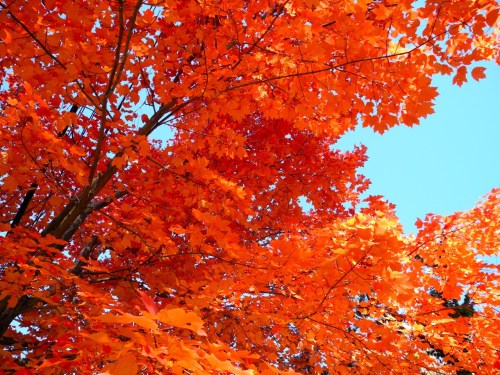My two daughters, Martha and Cary, and I trekked for two weeks in the Kangchenjunga range (Kangchenjunga is the third largest mountain in the world, and I was seeing it this time from the Indian side, not the Nepalese, as in 1996), and we experienced the challenge of a lifetime! Many thanks go to Kalsang Choden of the Potala Tours and Treks, with whom we planned our trip in Gangtok…and to an amazing guide, cook, and porters, all of whom took care of us as if we were family.
Take the rocky, unpredictable “trails” of the White Mountains and add altitude and freezing weather and you have the Sikkim Himalaya. We went up and down with a gain of 3,000 ft. on the very first day of climbing! But we enjoyed every minute (especially the two half-days of acclimitization rest), because we were immersed in a fairyland forest of bamboo, pine, and huge rhododendron, which was covered in a variety of hanging moss. We passed streams and waterfalls, crossed narrow, swinging bridges, and came upon sudden views of mountains rising out of the mist, only to disappear in an instant, swallowed by cloud and forest. It was so magical that we whooped and shouted for joy! Many trails just cut through the forest, and many were treacherously slippery with mud, and some were meticulously built with rocks jutting out for a better grip on the slope. These were also pathways used by locals to get from village to village. I don’t know what I’d have done without Cary, who sang me the Tara mantra and took my hand whenever the going got tough.
After six days, imagine getting up to 14,000 ft. to holy Lake Simiti and being surrounded by peaks freshly covered in snow. And imagine being pummeled by high winds as we considered whether to continue up the ridge on the higher altitude trek we had originally planned. The temperatures were plummeting and the ridge was covered in ice and snow. Nobody was going there…and certainly not us! The weather had turned cold much earlier than expected this year, but at least we managed to avoid the earlier rains that other trekkers had faced.
We had our beautiful starry nights, of course, and we had our frigid runs to less-than-optimum squat outhouses during those nights. And we had one night in Thangsing when we were sure the tents would blow away. But we had terrific food and the challenge of watching Martha’s reaction to high altitude kept us occupied. What a good sport she was! We had been promised by Kalsang that we didn’t need diamox because we’d have garlic soup every day. And she was right. But Martha still had her problems. First she lost her appetite (which gave the rest of us more food, though we weren’t that hungry, either). Then her eyelids began to swell, giving her the look of a curious frog. We photographed her daily and watched with each 1,000 ft. of elevation to see her improvement as she descended. Still, with all the discomfort, she’s game for a trek in Langtang in Nepal next year. Bravo, Martha!
We returned via our original route back to Thangsing, Dzongri (where we had seen the sunrise in the early morning from a high point), Phetang, Tshoka, Bakhim, and our starting point, Yuksom. Our final three days were spent on a monastery trek, every bit as steep, but in lower altitude along terraced hills dotted with small farming communities that clung to the mountainsides. We spent time talking with and photographing several families eager to see themselves on the digital screen. We observed unusual vegetation–fields of cardamon and trees being pruned of leaves, which are fed to cows to produce more milk. The countryside abounded in flowering bougainvillia and poinsettia bushes. And school children passed us along the way, shouting, “Hello, how are you.”
Everywhere we went Cary was intrigued by the gardens, especially those at higher altitude. We also enjoyed watching the young children, many of whom helped round up the animals and care for them. Some were as young as four-years-old. It was just part of their day and their responsibility as a member of a farming family.
Some of the monasteries we visited are: Dubdi and Hongri (where we tented about six inches from a cliff!); Sinon (or Silnol) and, on the very last day, the famous Tashiding Monastery, which was being prepared for the upcoming visit of the Dalai Lama. Groups of men and women were working– preparing the grounds, painting, and constructing new out-buildings. It was a beehive of activity! We were also there during the visit of a high lama from Ladakh, whom we watched being carried up the many steps to the main monastery, shielded from the noonday sun by a colorful umbrella, and accompanied by drumming and the blowing of ceremonial horns.
After a gala farewell with our guide, Tenzing, and his staff, we headed for Darjeeling, a veritable city in the sky, famous for its tea and its unusual scenery. Stay tuned for a recap of the next three weeks. Sorry there are no pictures. I’ve taken about 2,000, but am not good at uploading from internet cafes.
In the meantime, I hope you all have a Merry Christmas and an auspicious New Year!
































































